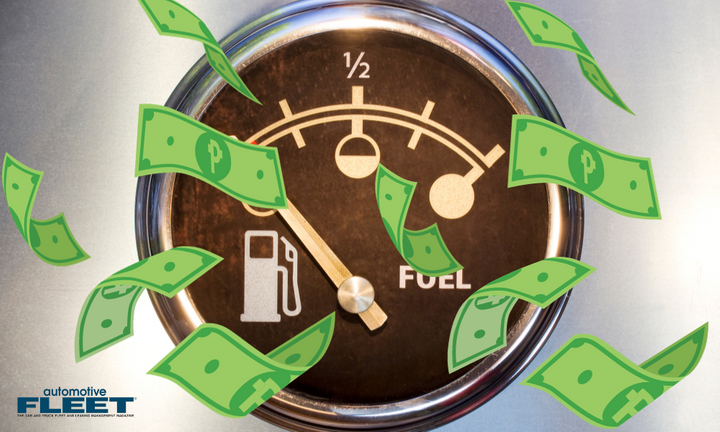Speak to an Expert
Book a CallFor vehicle reimbursement admins, fleet managers, and finance professionals.
In a year marked by economic uncertainty, inflation control measures, and changing consumer preferences, vehicle manufacturers have adjusted pricing in nuanced ways across categories. The average Manufacturer’s Suggested Retail Price (MSRP) across all vehicle categories increased by 2.12% year-over-year (YoY) from 2024 to 2025.
The dealer invoice (what dealers pay to manufacturers for vehicles) inflation rate is 2.17%, only slightly higher than the MSRP.
Both of these figures are below the Consumer Price Index (CPI) inflation rate of 2.4% year-over-year (to March). This should give consumers and businesses some confidence: auto prices are lower than the average inflation rate.
For companies running vehicle reimbursement programs—or considering a switch from company cars to driver-owned vehicles—these MSRP trends are more than just numbers. They influence how depreciation schedules and therefore reimbursement rates are calculated, which affect budgets and compliance.
Below, we break down the key pricing trends by vehicle category, highlighting models commonly used in FAVR (Fixed and Variable Rate) programs for employees and executives.
Key Highlights by Vehicle Category
Standard Vehicles (+4.79%)
Standard sedans saw a relatively high increase. The Toyota Corolla, a fleet favorite for its reliability and efficiency, saw its base model increase 1.4%, lower than the overall segment trend.
Compact Crossovers (+2.48%)
Crossovers remain popular among sales reps and field service workers. The Chevrolet Trax Sport showed no MSRP change YoY, helping temper the segment’s average increase.
Mid-size Cars (+1.94%)
The Chevrolet Malibu LS rose 3.1%, although other trims softened the category-wide increase.
Five-Passenger Crossovers (+2.68%)
MSRPs varied widely in this category, as can be seen in different Ford Escape trims:
- Ford Escape Base: +4.7%
- ST-Line: +11.9%
- Platinum Trim: –4.9%
This illustrates how trim selection can dramatically shift total cost of ownership.
Hybrid Passenger Cars (–6.29%)
Hybrids dropped in price, with the Honda Accord Hybrid decreasing 12.6%. This is great news for companies prioritizing sustainability and total cost reduction.
Seven-Passenger Crossovers (+0.04%)
Minimal changes here. The Dodge Durango GT was up slightly at +0.7%, indicating price stability in the family-sized fleet space.
Luxury and Executive Fleet Segments
Manager-Level Luxury (+1.93%)
The Lincoln Corsair base model increased 1.6%, in line with restrained upward pressure on luxury mid-tier vehicles.
Executive-Level Luxury (+1.26%)
The Cadillac XT6 Sport saw a modest 0.6% increase. For organizations with tiered vehicle policies, luxury pricing remains steady.
Senior Executive Vehicles (+3.11%)
The Mercedes-Benz GLS AWD Sport rose 2.6%, reflecting slight inflation in the high-end luxury market.
Pickup Trucks: Still Rising but Slower
2–3 Passenger Pickups (+3.52%)
The Ford F-150 XL 4×4 increased 1.6%, contributing to continued—but tapering—pickup inflation.
Extended Cab Pickups (+2.24%)
The RAM 1500 Tradesman climbed 5.9%, one of the sharper upticks in the pickup category.
4–5 Passenger Pickups (+1.46%)
The Chevy Silverado 1500 LT 4×4 saw only a 0.9% increase.
Heavy Duty Pickups (+4.56%)
The RAM 2500 Big Horn 4×4 Crew Cab (Gas) posted a 10.2% hike—among the steepest category-specific increases.
Electric Vehicles: A Plateau?
EVs (–0.31%)
Interestingly, EV pricing stabilized. The Nissan Leaf S actually increased slightly by 0.1%, but the overall category edged down, reflecting improved supply and incentives stabilizing price points, and also driven by new models coming in at lower (more accessible) price points.
Vehicle inflation vs. CPI
At first glance, the overall inflation picture from the U.S. Bureau of Labor Statistics[1] might appear worse than what’s happening in the auto market. In fact, CPI data shows a 2.4% increase in consumer prices year-over-year as of March 2025—higher than both the average vehicle MSRP increase of 2.12% and the average dealer invoice price increase of 2.17%.
This should give businesses and consumers some confidence: vehicle price inflation is running slightly below general inflation. For companies that reimburse employees for vehicle use, or for consumers shopping for a new car, this is a small but important signal that prices are moderating.
But there’s more nuance under the hood.
Why the BLS Shows “No Change” in Vehicle Prices
The Consumer Price Index (CPI) for new vehicles shows a 0.0% change year-over-year—which seems to contradict the increase in both MSRP and invoice prices.
Here’s why: the CPI tracks Fair Market Value (FMV), which reflects the real-world price paid by consumers in the open market. FMV incorporates transaction data, not list prices—meaning vehicles sold with rebates or lower-than-MSRP pricing bring down the CPI number, even if list prices rose. This methodology makes CPI great for measuring real-world spending power—but less relevant for businesses managing vehicle programs.
Reimbursement Programs Don’t Use FMV
When it comes to Fixed and Variable Rate (FAVR) or other vehicle reimbursement models, companies don’t base reimbursements on what a consumer paid after real-world negotiation. Instead, they use:
- MSRP (Manufacturer’s Suggested Retail Price)
- Invoice pricing (what dealers pay for vehicles, before markup)
These data points are:
- Standardized: Not affected by temporary sales or local incentives
- Consistent across geographies
- Used in FAVR models to calculate depreciation schedules and fixed costs
In short, MSRP and invoice prices are the real benchmarks for setting fair and compliant vehicle reimbursement policies—not FMV or CPI indexes.
Bottom line: While CPI suggests auto prices have leveled off, businesses should still look to MSRP and invoice trends for actionable insights. And fortunately, those numbers show modest, manageable growth—providing a degree of cost predictability for vehicle programs in 2025.
U.S. vs. Canada MSRP Trends
While MSRP trends in Canada closely mirror those in the U.S., the cost for consumers to finance car loans is different.
In the United States, the prevailing vehicle finance rate has stayed at 7.5%, exerting continued upward pressure on the total cost of vehicle ownership. Meanwhile, Canada is trending down, with finance rates at 4.95%—a drop that reflects a broader softening of monetary policy up north.
While reimbursement programs do not reimburse for the finance costs of vehicles, this difference is something fleet managers should be aware of. If you are buying or leasing vehicles for your company, you may experience a higher total cost of ownership due to finance rates. If your employees are financing personal vehicles and you are reimbursing them, they may have the impression of a lower total benefit.
Takeaway for Vehicle Reimbursement Programs
With average MSRP growth of 2.12%, now is the time to reassess how your business handles vehicle-related costs. Programs like FAVR depend on accurate depreciation and cost-of-ownership modeling, all of which are sensitive to MSRP fluctuations.
Key actions for 2025:
- Update reimbursement rates to reflect new MSRPs.
- Audit vehicle eligibility lists to ensure trims remain cost-effective.
- Factor in MSRP variance between trims when customizing executive tiers.
- Explore hybrid and EV options to capitalize on decreased or stable pricing.
Want help recalibrating your vehicle program based on these insights? Contact Cardata to learn how we can align your reimbursement program with the market reality—keeping your teams mobile and your budgets optimized.
*
[1] Consumer Price Index Summary – 2025 M03 Results
[2] What’s the Average Interest Rate for Car Loans in Canada?
Share on:


